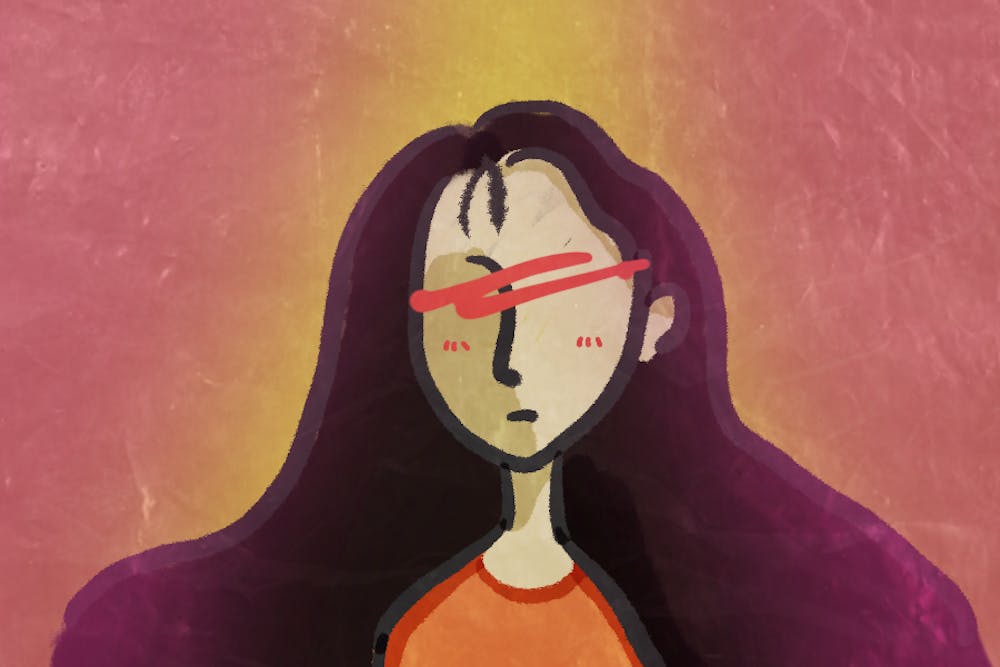In July, my sister left for Manhattan to start her new job, and for the first time in my life, I could not cast away the uneasy feeling that something serious could happen to her. A rise in COVID-19 cases, coupled with xenophobic rhetoric from the former President, had led to a significant spike in hate crimes toward Asian Americans, ranging from acid attacks to stabbing incidents. After what I had assumed was a gradual decline in such crimes, the recent death of 84-year-old Vicha Ratanapakdee only reaffirmed that people like my sister and I are not as welcome in this country as we had thought.
What most do not recognize is that anti-Asian discrimination is not purely the result of COVID-19; it is rooted in the enduring notion that Asian Americans are permanent foreigners. No matter how many generations we spend in the United States or how much of our culture we sacrifice for even a semblance of Americanness, we are asked questions like “Where are you really from?” or met with nods of approval when our English exceeds expectations. When Asian Americans are called things like the “model minority,” we grow inextricably tied to our foreignness and fall victim to the cross-generational pressure to internalize these norms. In fact, this euphemistic classification, as I see it, is a key hurdle in preventing us from crossing that invisible line of true Americanness.
At the surface level, the model minority myth characterizes a minority group that is exalted above others for its comparatively high rates of socioeconomic success. As Amira Chowdhury, founder of the Penn Asian American Pacific Islander (AAPI) Politics student organization, puts it, the complexities underlying this label go far beyond mere success in the job market. It encompasses a set of expectations that Asian Americans “do not shake up systems or pose structural challenges to disrupt the systematic barriers of oppression,” according to Amira. We are well-behaved and quietly do what we are supposed to. We are the agreeable, non-threatening type of neighbor.
More often than not, the term “model minority” is construed not as an insult but as the valorization of the Asian American household. In fact, this is especially true in the eyes of older Asian Americans, most of whom immigrated when there was a different social and political landscape. In the mid-20th century, there was still a relatively small transnational population of Asians, and a connection to an “exotic” Asian country was deemed less attractive than it is today. It is in this context that expressions like “yellow peril” came to be, signifying the existential threat that Asians could pose to the job security of Americans. For first-generation immigrants, it is thus conceivable that any sign of acceptance from white America was welcomed. According to Professor Josephine Nock-Hee Park, director of the Asian American Studies Program, a “basic truth about this country is that race is Black and white. If you are designated a model minority, you are operating within a Black and white system, and it means you are closer to the white term than the Black term.” While the term “model minority” has by no means conferred a great deal of privilege upon Asian Americans, it, at the very least, hinted at a potential departure from the harshly negative implications surrounding the “yellow peril.”
However, the issue with this is that our acceptance in the U.S. is then conditional on our ability to satisfy the model minority myth. At the heart of our discourse about Asian Americans is the belief that we still belong on another continent. We are only American insofar as we do not cause an inconvenience.
Unfortunately, the illusion of our acceptance into the U.S. is made overtly clear when Asians are the center of any controversy. At the height of World War II, President Roosevelt indirectly authorized the forced relocation of Japanese-American families. While more than 120,000 Japanese-Americans were forced into internment camps simply due to their association with the Axis Power, a substantially smaller number of German-Americans and Italian-Americans were affected by similar actions. In 2007, in the weeks following the Virginia Tech school shooting perpetrated by a 23-year-old Korean-American, my mom opted to stay home after getting unpleasant looks and overhearing spiteful comments at the grocery store. And today, Chinese-Americans are continually the victims of heinous hate crimes, regarded by some as the bane of the current pandemic. To be Asian American is to oscillate between acceptance due to our invisibility and rejection due to our hyper-visibility.
It is in part thanks to the model minority myth that anti-Asian discrimination is not as frequently discussed as it should be: Asian Americans are thought to not encounter much hardship or prejudice, which is entirely untrue. A 2018 Pew Research Center report found that Asians as an ethnic and racial group experience the largest income inequality gap in the U.S. While anti-Asian hate crimes often do not make headlines and are less frequently reported, they are indeed occurring and cannot be brushed aside.
Our Americanness should not be predicated upon anything. Asian Americans should not need to abandon their cultural heritage or live up to people’s expectations of the model minority to earn a sense of belonging in the United States — to avoid getting assaulted on the street or physically disfigured. It should not be an uphill battle to be and feel like an American. Ultimately, the first step to dispelling our permanent foreignness is to stop calling us the model minority. Characterizing us by our superficial success relative to other minority groups depersonalizes Asian Americans, neglects our complexities, and contributes to the perception that we can be taken advantage of without any consequences.
ANDY YOON is a first-year student in the College and Wharton from Seoul, South Korea. His email address is andyy327@wharton.upenn.edu.









